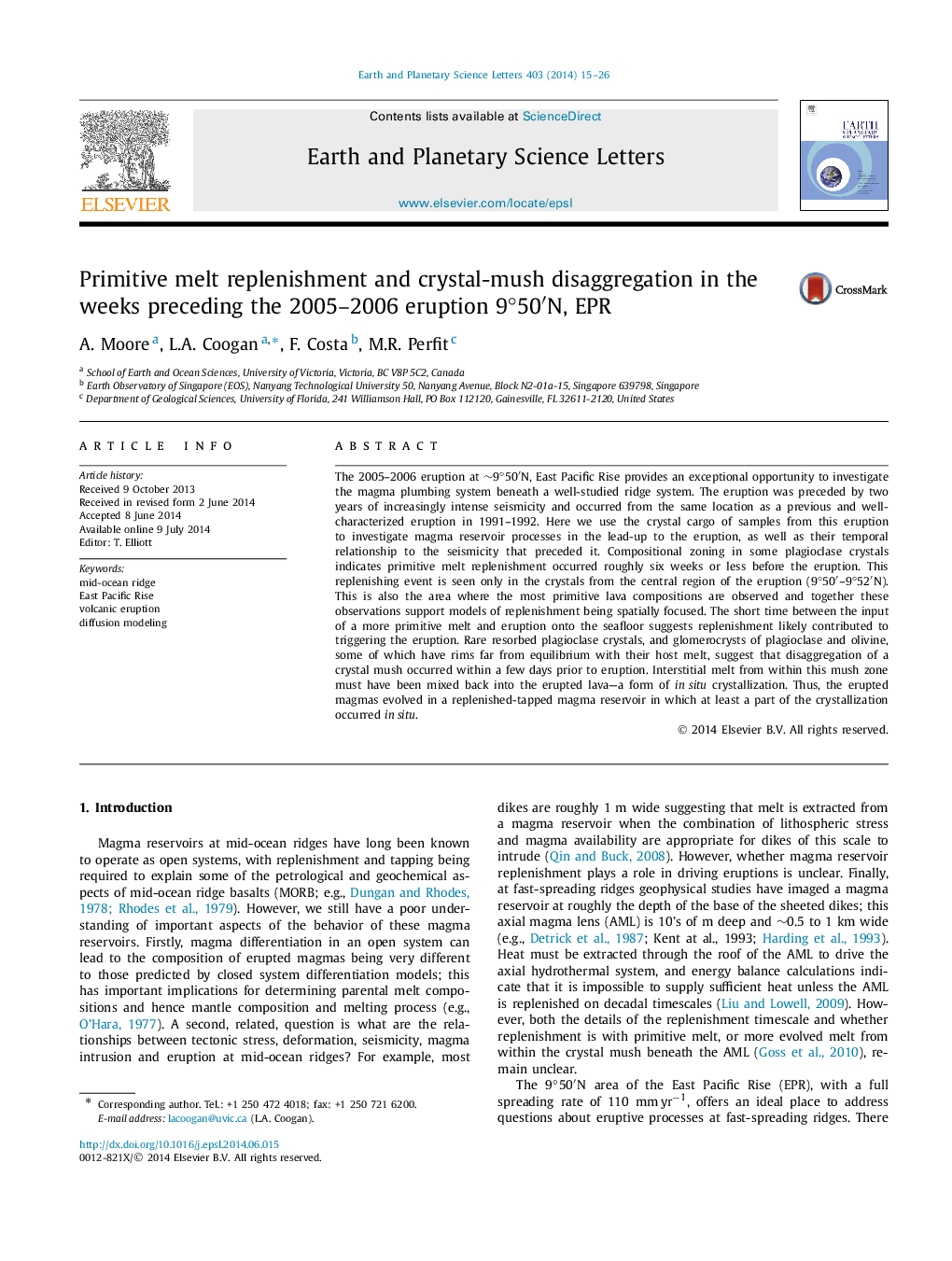| کد مقاله | کد نشریه | سال انتشار | مقاله انگلیسی | نسخه تمام متن |
|---|---|---|---|---|
| 6429080 | 1634753 | 2014 | 12 صفحه PDF | دانلود رایگان |

- We studied the lavas of the 2005-2006 EPR eruption.
- Diffusion modeling of Mg in plagioclase allows insight into pre-eruption conditions.
- Primitive magma replenished the axial melt lens in the weeks before 2006 eruption.
- Evidence of the primitive melt is only observed in central region of the eruption.
The 2005-2006 eruption at â¼9°50â²N, East Pacific Rise provides an exceptional opportunity to investigate the magma plumbing system beneath a well-studied ridge system. The eruption was preceded by two years of increasingly intense seismicity and occurred from the same location as a previous and well-characterized eruption in 1991-1992. Here we use the crystal cargo of samples from this eruption to investigate magma reservoir processes in the lead-up to the eruption, as well as their temporal relationship to the seismicity that preceded it. Compositional zoning in some plagioclase crystals indicates primitive melt replenishment occurred roughly six weeks or less before the eruption. This replenishing event is seen only in the crystals from the central region of the eruption (9°50â²-9°52â²N). This is also the area where the most primitive lava compositions are observed and together these observations support models of replenishment being spatially focused. The short time between the input of a more primitive melt and eruption onto the seafloor suggests replenishment likely contributed to triggering the eruption. Rare resorbed plagioclase crystals, and glomerocrysts of plagioclase and olivine, some of which have rims far from equilibrium with their host melt, suggest that disaggregation of a crystal mush occurred within a few days prior to eruption. Interstitial melt from within this mush zone must have been mixed back into the erupted lava-a form of in situ crystallization. Thus, the erupted magmas evolved in a replenished-tapped magma reservoir in which at least a part of the crystallization occurred in situ.
Journal: Earth and Planetary Science Letters - Volume 403, 1 October 2014, Pages 15-26